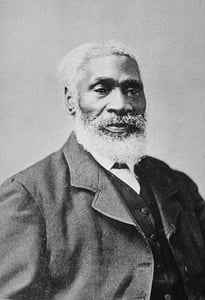Harriet Beecher Stowe’s Uncle Tom’s Cabin is cultural dynamite. Within three months of its publication in 1852, 300,000 copies of the novel were sold in the United States. Many believe the events in Stowe’s book helped propel the United States into the Civil War. Even now, Uncle Tom’s Cabin remains one of the most widely read and acknowledged abolitionist works of all time. Today, we explore Harriet Beecher Stowe’s inspiration for her characters and storyline.
Josiah Henson's Life and Influence
As he grew, Henson noted that he was given more responsibilities from his owner, Isaac Riley, who trusted him as a good worker. Riley even agreed to a deal with Henson and said he could buy his freedom for $450. Although Henson had opportunities to escape — most notably when he was in charge of chaperoning a group of slaves as they ventured to Kentucky to work for Riley’s brother, Amos — he recalled that he wanted to purchase his freedom as he had agreed to do.
Other Potential Inspirations for "Uncle Tom"
 Harriet Beecher Stowe spent much time (approximately 20 years) living in Cincinnati, Ohio, directly across the boarder from then slave-state, Kentucky. There, she was exposed to the harsh reality faced by many African Americans, both while they sought asylum in the North through the underground railroad, and as she heard their stories of time spent as slaves in the South. Stowe’s ‘access’ to numerous accounts of slavery makes it easy to see why, as Stowe claimed in her follow-up work, A Key To Uncle Tom’s Cabin (1853), no, one person can be credited as the sole inspiration for Uncle Tom.
Harriet Beecher Stowe spent much time (approximately 20 years) living in Cincinnati, Ohio, directly across the boarder from then slave-state, Kentucky. There, she was exposed to the harsh reality faced by many African Americans, both while they sought asylum in the North through the underground railroad, and as she heard their stories of time spent as slaves in the South. Stowe’s ‘access’ to numerous accounts of slavery makes it easy to see why, as Stowe claimed in her follow-up work, A Key To Uncle Tom’s Cabin (1853), no, one person can be credited as the sole inspiration for Uncle Tom.
Still, more recently, Susanna Ashton, an American Literature professor at Clemson University, posits that it was the slave whom Stowe helped stowaway while living in Maine who was the inspiration for her powerful novel. Ashton claims that man was John Andrew Jackson. Ashton discovered that Jackson met Stowe before she had written Uncle Tom’s Cabin which led her to believe that he could be Stowe's source. Jackson wrote of the meeting that after Stowe and her family took him in, “She listened with great interest to my story.”
That we don’t know the exact person or persons who incited Harriet Beecher Stowe’s Uncle Tom's Cabin does not detract from the fact that the book served as a powerful catalyst for change in the United States.










